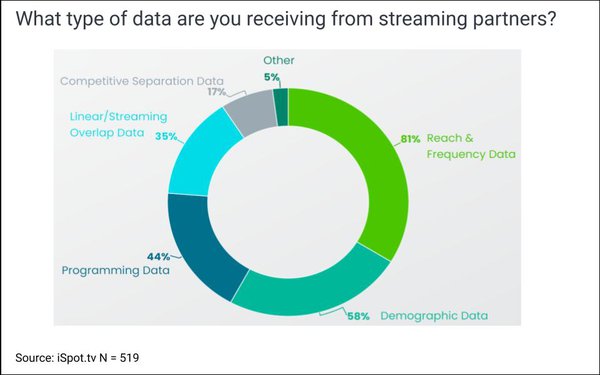Something you might want to see and understand so as to help your local-direct clients get the most from their media marketing. Philip Jay LeNoble, MBA, Ph.D.
Upfronts Survey: 74% To Spend as Much or More As 2022, Streaming, New Currencies to Play Key Roles
- by Karlene Lukovitz @KLmarketdaily, 7 hours ago

While some have predicted flat to down spending at this year’s upfronts due to the uncertain economic outlook and downturns in categories including tech and cryptocurrency, iSpot.tv’s 2023 upfronts survey presents a somewhat more upbeat scenario.
Fully 78% of of 519 brand and agency executives surveyed between February 24 and March 2 said they expect overall marketing budgets to increase (34%) or remain the same (44%) in 2023.
Looking specifically at the upfronts, 74% said they expect to spend as much or more as in 2022.
About half (53%) expect to spend about the same, 16% a bit more and 5% much more, versus 26% expecting to spend less or much less.
However, after three consecutive years of increasing flexibility, 61% of advertisers expect that 2023 upfront commitments will be similar or less flexible than previous years.
Streaming is behind some of the upfronts budget momentum. Nearly a third (30%) say they’re allocating more than 20% of their upfront budgets to streaming platforms. In addition, 21% cite 16% to 20% increases, 20% cite 11% to 15% increases, and 16% cite 5% to 10% increases. Just 12% say streaming allocation increases will be under 5%.

Hulu looks to have the advantage in attracting streaming dollars, with 74% of buyers citing Hulu as one of the partners to which they’ll be allocating upfront spend. Others frequently mentioned include YouTube TV (48%), Peacock (46%), Roku (45%), and Paramount+ (35%).

The transition to more streaming ad buys requires modern currencies, and 69% of survey respondents indicated that they are somewhat (54%) or very (15%) interested in transacting on non-legacy currencies at this year’s upfronts, versus 31% saying they have no interest at this point.

Streaming is also driving a variety of data-based buys. Fully 81% of advertisers say they will get reach and frequency data from their streaming partners, 58% will get demographic data, 44% will get programming data, and 35% expect linear/streaming overlap data. In addition, 17% expect competitive separation data, and 5% expect “other” data.

iSpot.tv also asked buyers to provide open-text responses about what would help them decide to increase or decrease their streaming budgets.
Answers included return on ad spend, recency of conversions, frequency of exposure to conversion data, incremental reach measurement of linear and streaming, continuous play exposures, more information linking ad exposure to conversions, competitor insights, and better data and consumer segmentation.
Asked for open-text responses about key challenges on the linear and streaming measurement front, answers included justifying the allocation to each without having a clear view of total linear/digital video metrics; trying to put upfront and non-upfront activity in a holistic context; measuring DMA-level reach and frequency; understanding the true reach yielded by a given mix of streaming partners; accuracy and transparency; measuring ROI; and understanding creative “wear-out.”

No comments:
Post a Comment